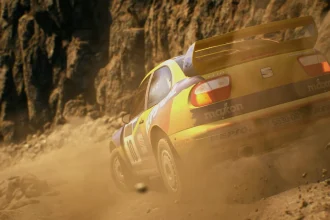There are games that teach you everything - except patience. Bionic Bay from Psychoflow Studio is one such game, which is Blue Prince (our review) is vying for the indie crown this year. A merciless, beautiful nightmare that knows no mercy, but isn't unfair either. It punishes, but only if you deserve it. Or because you weren't paying attention. Or because the physics of the game have once again shown you that gravity knows no mercy.
This raises a fundamental question: do games have to be simple? No. But they should take the player seriously - not push the solution down their nose, but give them the freedom to find it themselves. And that is exactly what Bionic BayIt doesn't lead you by the hand, it pushes you into a pit and then watches to see if you learn how to jump.
An experiment goes wrong - as always, only more beautiful
The story begins with a classic sci-fi motif: a scientist and his team discover a mysterious artifact that looks like the egg of a machine god. Of course everything explodes, of course the protagonist is catapulted into an alien world, and of course the real story begins where science has long since capitulated.
What follows is a journey through a biomechanical world that feels like the diary of a disturbed designer who finds himself somewhere between Limbo, Super Meat Boy and a Swiss clockwork. The player traverses enchanted forests, rusty factory ruins and surreal high-tech temples. Everything is beautiful - and deadly. Everything seems strange - and yet familiar. A place that screams with every flicker of the screen: "There's no mercy here."

Teleport, swap, defy
The great strength of Bionic Bay does not lie in classic level design or storytelling - it lies in its game mechanics. After finding a mysterious artifact, the protagonist can suddenly swap places with objects, outwit gravity or teleport through obstacles. Sounds like a superpower - but it feels more like a physics test under time pressure.
Because the game forces you to use these skills in creative ways. There is no "one way" through a level. Only solutions that you have to work hard to find. Sometimes it's smarter to proceed slowly and think about every step, sometimes the only thing that helps is a courageous leap into the chaos - in the hope that you'll come out alive at the other end. It's this game of possibilities that Bionic Bay so fascinating.
Dying is part of Bionic Bay incidentally, part of everyday life. Not occasionally, but every second. A laser trap here, a buzz saw there, a harmless-looking ledge that plunges you into a depth known only to death at the next step. The good news is that the game is forgiving. The checkpoints are fair, the loading times are lightning fast, and a practical rewind function lets you start a new attempt at any time.
However, there are no difficulty levels. No "easy mode". No bread of mercy. If you want to survive here, you have to learn - or give up. This makes the title risky for casual players, but a pure joy for die-hards.
Atmosphere to kneel down in
What Bionic Bay visually is remarkable. The pixel art is not a retro nostalgia show, but a well thought-out stylistic device. There is atmosphere in every frame, every biome looks alive and surreal at the same time. Light and particle effects create an almost trance-like immersion. It's a game that doesn't shout, but whispers - with images that burn themselves into your memory.
The camera work also deserves praise: scene transitions have a cinematic effect, and changes of perspective deliberately set emotional accents. You often feel Bionic Bay feels more like a playable short film than a classic platform game. Especially in combination with the sophisticated soundtrack, an atmosphere is created that is rarely conveyed so vividly in indie games.
The soundtrack from Bionic Bay on the other hand, acts as a gentle counterforce to the harshness of the gameplay. While your on-screen death flashes ten times, a melancholy orchestra plays in the background as if to say: "It's not bad, try again." This contrast of visual harshness and acoustic softness is surprisingly effective. It relaxes where other games stir up frustration.
Physics, ragdolls and perfect timing
In the center of Bionic Bay is physics. Everything you do has consequences. Place an object incorrectly? Dead. Jumped too early? Dead. Teleported to the wrong corner? Dead, plus a box on your head. The game world reacts to you - for better or for worse. The ragdoll system makes for wonderfully absurd death animations, which sometimes make you laugh, even if you ask yourself: "What the hell was that again?"
The controls are precise, but require timing. And patience. Because it's not unusual for a single blink of an eye to be too early or too late and you have to start the level all over again. But: it never feels undeserved. The game is tough but fair - a fine line that few indie games really master.

For all those who Bionic Bay If you don't just want to survive, but dominate, the title offers a sophisticated speedrun mode with leaderboards and time-based challenges. After completing the campaign - which takes around 8 to 9 hours - another playing field opens up for all those who want to break records and put their reflexes to the test.
The speedrun focus is not a gimmick, but cleverly integrated into the game design. Every passage, every obstacle can be optimized with practice. So if you don't just want to conquer the game, but perfect it, you'll have enough material here for many more hours.
Conclusion








